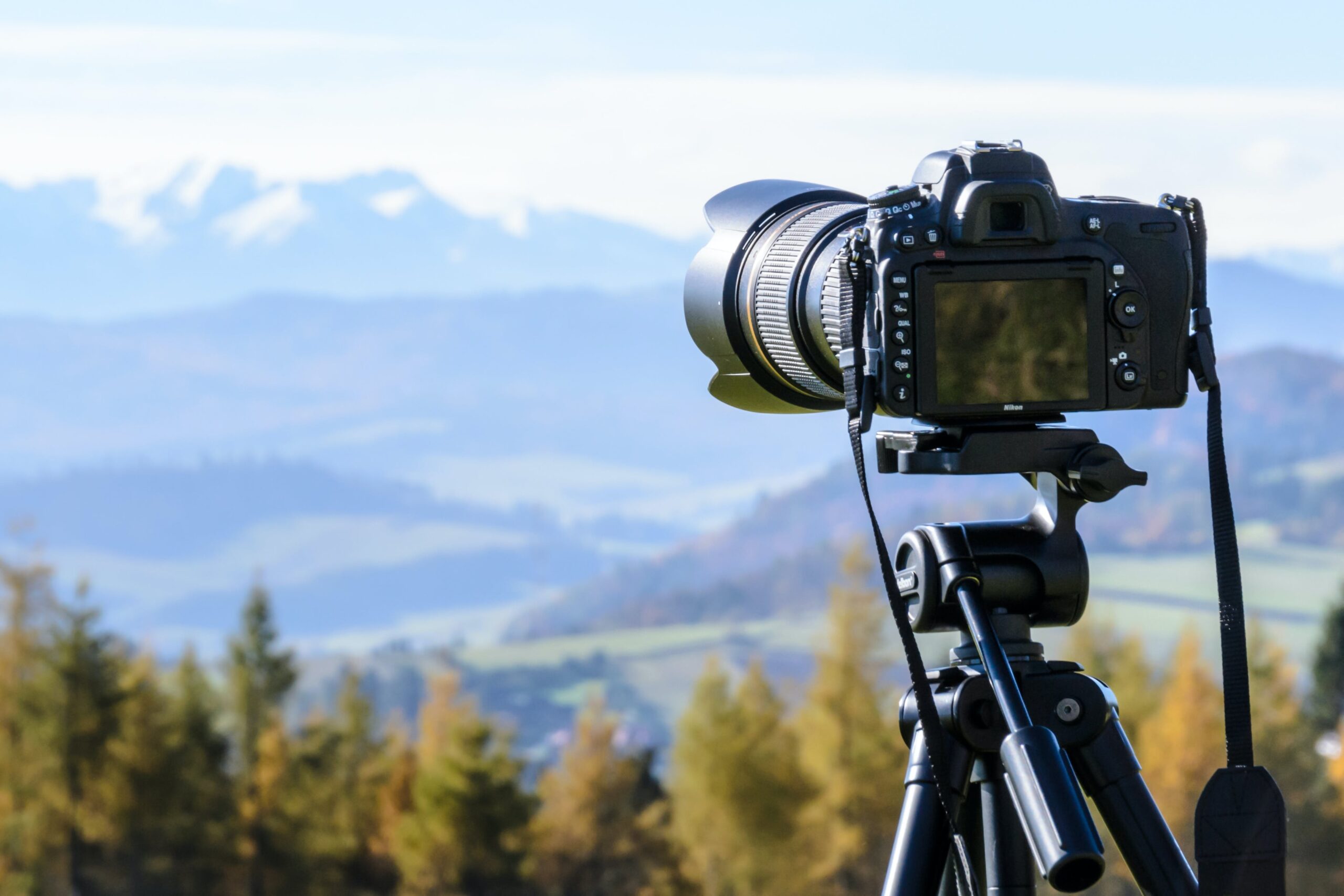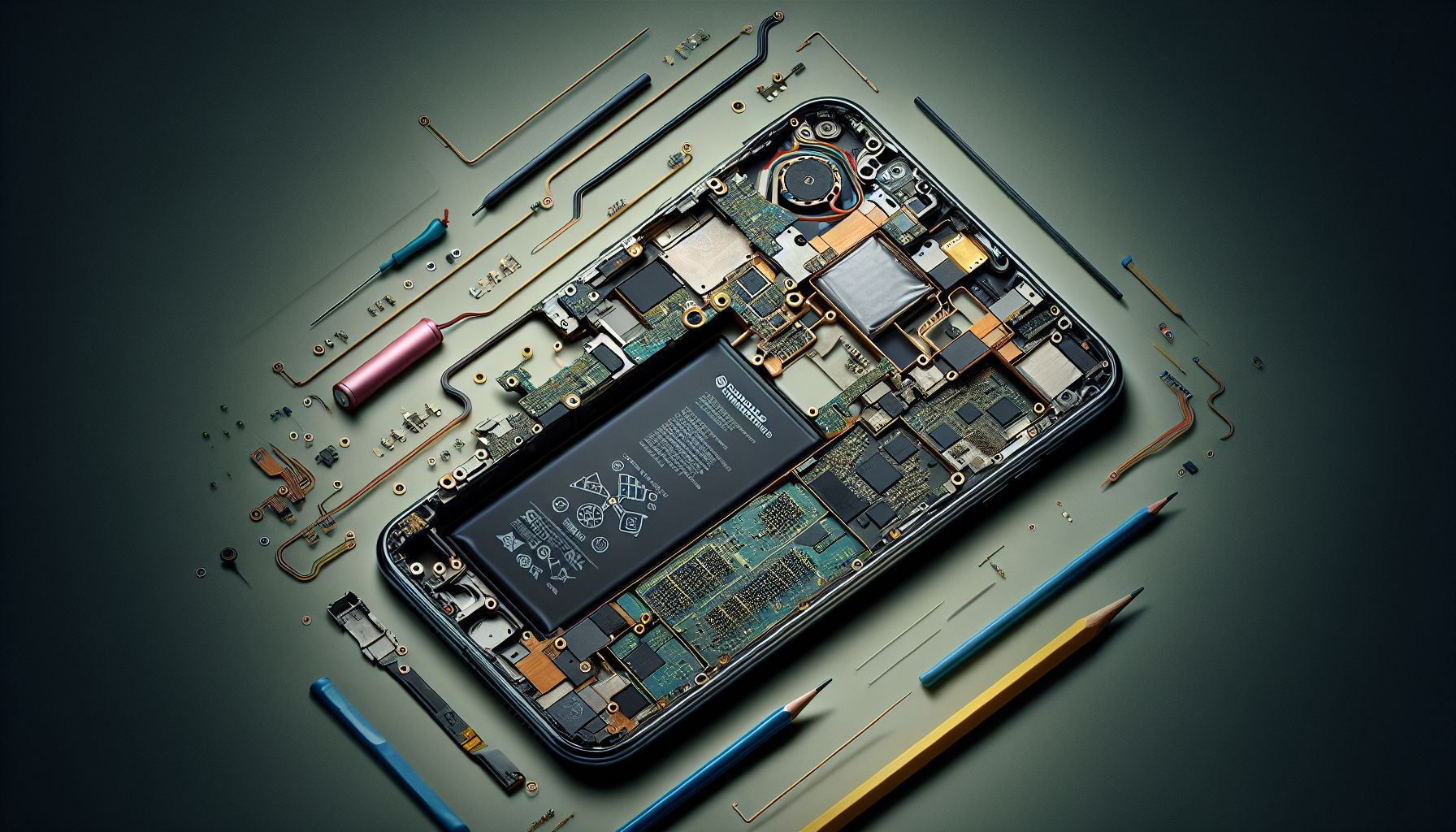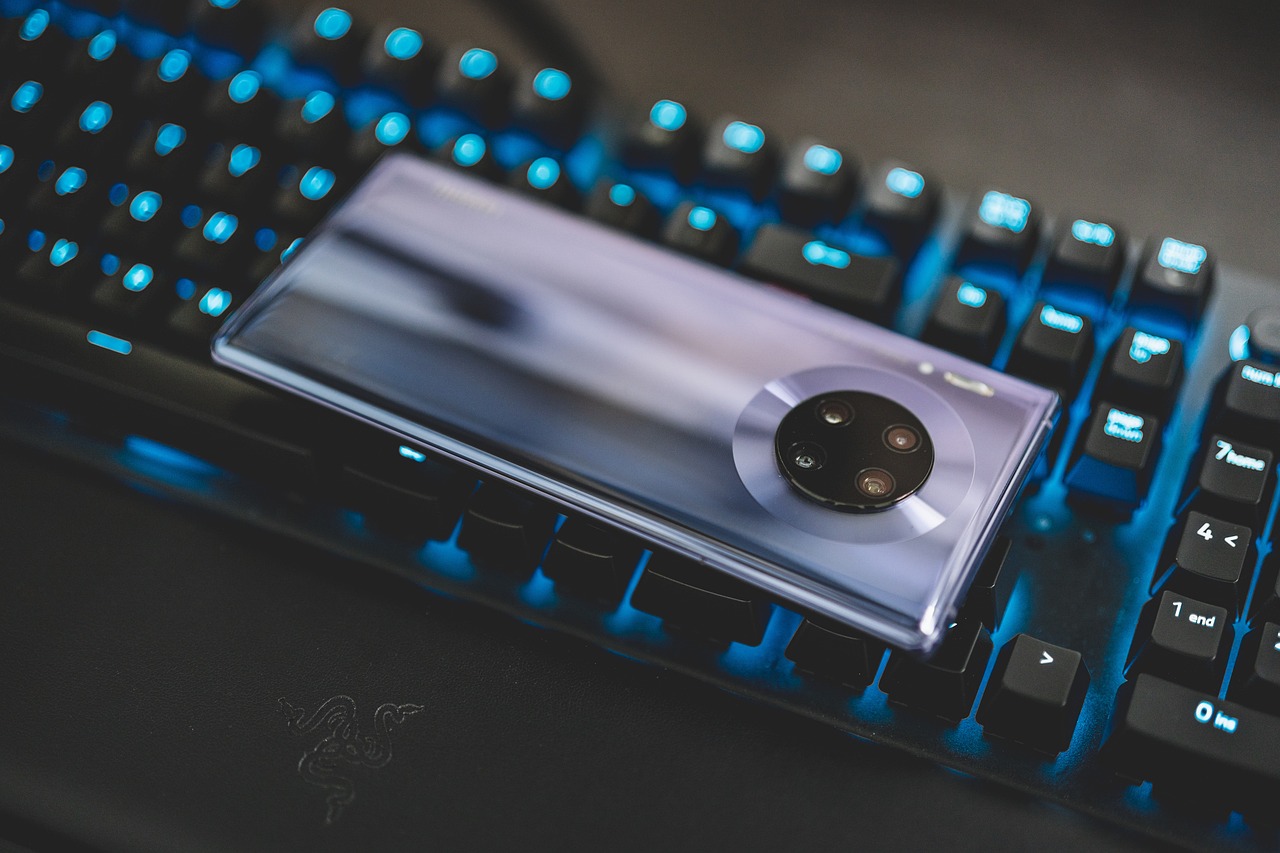Imagine being able to capture breathtaking moments with stunning clarity and precision. Whether you’re a professional photographer or an amateur enthusiast, understanding camera performance is essential for unlocking your true creative potential. In this article, we will delve into the world of cameras, comparing their performance to help you make informed decisions when it comes to purchasing your next photography companion. From image quality and dynamic range to autofocus speed and low-light capabilities, we will explore the key factors that contribute to a camera’s overall performance, enabling you to capture those perfect shots with ease. Get ready to embark on an exciting journey of discovery as we unravel the secrets behind camera performance.
1. Factors Affecting Camera Performance
1.1 Sensor Size
The size of a camera sensor greatly influences its performance in capturing high-quality images. Larger sensors tend to produce images with better dynamic range, reduced noise levels, and improved low light performance. They also allow for shallower depth of field, enabling photographers to create stunning bokeh effects. On the other hand, smaller sensors are more commonly found in compact cameras and smartphones, which can still produce decent images but may struggle in challenging lighting conditions.
1.2 Megapixel Count
While the megapixel count alone doesn’t determine image quality, it does play a role when it comes to the amount of detail a camera can capture. Higher megapixel counts allow for more detailed images and the ability to crop or enlarge photos without significant loss of quality. However, it’s important to note that larger megapixel counts can also result in larger file sizes and may require more significant storage capabilities.
1.3 ISO Sensitivity
ISO sensitivity refers to the camera’s ability to handle different light conditions. A camera with a wide ISO range allows for the adjustment of sensitivity to light, enabling users to capture images in low light without excessive noise. Higher ISO settings can come at the expense of image quality, as they can introduce digital noise or graininess. Therefore, a camera with good ISO performance strikes a balance between capturing bright images in low light without sacrificing image quality.
1.4 Dynamic Range
Dynamic range is the range between the darkest shadows and the brightest highlights that a camera can capture in a single image. A camera with a wider dynamic range can capture more details in both bright and dark areas, resulting in images that accurately represent the scene’s contrast. This is particularly important in landscape or high-contrast lighting situations. Cameras with larger sensors typically have better dynamic range capabilities.
1.5 Autofocus Speed and Accuracy
Fast and accurate autofocus is crucial for capturing sharp and in-focus images, especially when shooting moving subjects or in challenging conditions. Different camera systems employ various autofocus technologies, including phase detection, contrast detection, or hybrid systems. The speed and accuracy of autofocus can vary between cameras, which can greatly impact the ease of capturing fast-paced action or ensuring precise focus in every shot.
2. Image Quality
2.1 Noise Levels
Noise levels in an image refer to the presence of unwanted graininess or visual distortions, particularly visible in low light situations. A camera with good noise management capabilities will produce images with minimal noise, preserving details and allowing for cleaner and smoother image reproduction. This is especially important for photographers who often shoot in challenging lighting conditions or use higher ISO settings.
2.2 Color Accuracy
Color accuracy is essential for capturing images that represent the true colors of the scene being photographed. A camera that accurately reproduces colors provides more natural and lifelike images. Different camera brands and models may have variations in color processing, making some cameras better suited for specific shooting conditions, such as landscapes, portraits, or vibrant subjects.
2.3 Sharpness and Detail
Sharpness and detail are crucial factors in evaluating image quality. A camera’s ability to capture fine details and produce sharp images greatly impacts the overall quality of the photographs. Higher-resolution sensors and quality lenses contribute to sharper and more detailed images.
2.4 Low Light Performance
The ability of a camera to perform well in low light conditions is vital for photographers who frequently shoot indoors, during nighttime, or in dimly lit environments. Cameras with larger sensors, wider aperture lenses, and effective noise reduction algorithms tend to perform better in low light situations, resulting in cleaner images and improved visibility.
2.5 Lens Quality
The quality of the lens used in conjunction with the camera body plays a significant role in image quality. A lens with good optics, low distortion, and minimal aberrations contributes to sharper, more detailed images. Additionally, the availability of different lenses and the ability to interchange them can expand the creative possibilities for photographers.

3. Speed and Performance
3.1 Shutter Lag
Shutter lag refers to the delay between pressing the shutter button and the camera actually capturing the image. Cameras with minimal shutter lag allow for capturing fast-moving subjects or decisive moments without any delay. This is particularly crucial in sports or wildlife photography, where split seconds can make a significant difference.
3.2 Burst Mode
Burst mode, also known as continuous shooting, enables the camera to capture a series of images rapidly. The ability to shoot at high continuous frame rates is beneficial for capturing action sequences or fast-paced events. A camera with a generous buffer capacity can sustain continuous shooting for more extended periods without slowing down or experiencing buffer overflow.
3.3 Start-up Time
The time it takes for a camera to power on and become ready for use greatly impacts the overall user experience. Cameras with fast start-up times are more convenient, as they allow photographers to quickly respond to fleeting moments without delays. This is especially important for street photographers or those who frequently shoot spontaneous subjects.
3.4 Processing Speed
The processing speed of a camera affects various aspects, including image playback, menu navigation, and post-capture image processing. A camera with faster processing speed allows for quicker image previews, smoother navigation through menus, and reduced waiting time for image processing tasks. This can greatly enhance the overall shooting experience and productivity.
3.5 Buffer Size
Buffer size refers to the amount of temporary storage space available in the camera to store images before writing them to the memory card. Cameras with larger buffers can capture more consecutive shots in burst mode without being limited by the buffer’s capacity. This is particularly important for photographers who frequently shoot fast-moving subjects or in continuous burst mode.
4. Video Recording
4.1 Resolution and Frame Rate
The resolution and frame rate capabilities of a camera significantly impact the quality and smoothness of video recordings. Higher resolutions, such as 4K or even 8K, offer more details and clarity. Similarly, higher frame rates, such as 60fps or 120fps, result in smoother video playback and better motion capture. These features are particularly important for videographers or those who enjoy recording high-quality videos.
4.2 Image Stabilization
Image stabilization plays a vital role in capturing steady and shake-free videos, especially when shooting handheld or in unstable conditions. Optical image stabilization (OIS) and electronic image stabilization (EIS) systems help reduce the effects of camera shake, resulting in smoother footage. Some cameras even offer advanced stabilization technologies, such as gimbal-like stabilization or hybrid systems.
4.3 Audio Quality
While often neglected, audio quality is crucial for capturing high-quality videos. A camera with good built-in microphones or external microphone support can greatly enhance the audio recording capabilities. Clear and well-balanced audio helps to convey the atmosphere and accurately reproduce the sounds of the recorded scene.
4.4 Autofocus Performance
Smooth and accurate autofocus is essential for video recording, particularly when capturing moving subjects or changing focus points. Cameras with reliable autofocus systems, such as phase detection or dual pixel autofocus, can provide more professional-looking videos. The ability to adjust the focus speed and sensitivity allows for fine-tuning the focusing behavior to suit different shooting situations.
4.5 Slow-motion and Time-lapse
The ability to capture slow-motion or time-lapse footage adds creative options to videos. Slow-motion allows for capturing and playing back scenes at a higher frame rate, resulting in cinematic and visually appealing effects. Time-lapse enables the recording of long periods of time in a compact video format, condensing hours or even days into short clips. Cameras with dedicated slow-motion and time-lapse features open up new possibilities for videographers.

5. User Interface and Controls
5.1 Ergonomics and Button Layout
Ergonomics and button layout are crucial for a comfortable and intuitive shooting experience. Cameras with well-designed ergonomics provide a firm grip and easy access to essential controls, allowing for effortless adjustments and quick shooting. The arrangement and feel of buttons, dials, and switches greatly impact the ease-of-use and overall user satisfaction.
5.2 Menu Navigation
Intuitive and user-friendly menu navigation enables photographers to access and adjust camera settings quickly. Cameras with well-organized menu systems, clear icons, and logical menu structures enhance the overall usability. Quick and easy navigation through menus saves time and ensures a smooth shooting experience.
5.3 Customization Options
The availability of customization options allows photographers to personalize their shooting experience. Cameras that offer customizable buttons, function menus, or user-defined settings enable photographers to tailor the camera’s operation to their specific shooting style or preferences. This flexibility can greatly improve efficiency and convenience in different shooting scenarios.
5.4 Touchscreen Functionality
Touchscreen displays have become increasingly common in modern cameras, providing an intuitive and user-friendly way of interacting with the camera’s settings and menus. Touchscreens allow for quick navigation, menu selection, and even touch-to-focus capabilities. A responsive and well-implemented touchscreen enhances the overall usability and convenience of the camera.
5.5 Viewfinder Quality
The quality and clarity of the camera’s viewfinder significantly impact the shooting experience, especially for photographers who prefer optical viewfinders. A high-quality viewfinder ensures a clear and accurate representation of the scene being photographed, allowing for better composition and precise focusing. Electronic viewfinders (EVFs) should also offer good resolution and color accuracy for an immersive shooting experience.
6. Battery Life
6.1 Capacity
Battery capacity determines the duration of a camera’s operational runtime on a single charge. Cameras with larger battery capacities can last longer in the field without requiring frequent battery changes or recharging. This is particularly important for photographers who engage in extended shooting sessions or those who travel to remote locations with limited charging options.
6.2 Power Saving Features
Power-saving features, such as sleep mode, automatic power-off, or eco modes, help extend the battery life by conserving energy when the camera is not in use. These features reduce unnecessary power consumption and can make a significant difference, especially during long shooting days or when access to power sources is limited.
6.3 Continuous Shooting
The battery life of a camera can be influenced by its continuous shooting capabilities. Cameras with high-speed burst modes or continuous shooting at high frame rates can consume more power, resulting in a shorter battery life. Being aware of a camera’s expected battery life during continuous shooting scenarios is essential for planning and ensuring sufficient power supply.
6.4 Video Recording
Video recording tends to drain the camera’s battery more quickly than regular still photography. Cameras with good battery life for video recording allow for extended recording sessions without interruptions or frequent battery changes. Dedicated videographers or those frequently recording videos should consider cameras with robust battery performance in this regard.

7. Connectivity and Storage Options
7.1 Wireless Transfer
Wireless transfer capabilities, such as Wi-Fi or built-in Bluetooth, enable seamless and convenient image transfer between the camera and other devices. This feature allows for instant sharing of images on social media, remote camera control, or transferring files to a computer or smartphone without the need for physical cables or memory card readers.
7.2 NFC and Bluetooth Connectivity
Near Field Communication (NFC) and Bluetooth connectivity can enhance the camera’s pairing capabilities with compatible devices. NFC enables quick and automatic connection establishment between the camera and other NFC-enabled devices, simplifying the process of transferring files or establishing a Wi-Fi connection. Bluetooth connectivity offers an always-on connection for easy remote control or instant image transfer.
7.3 Memory Card Types
Different cameras support various memory card formats, such as SD, CFexpress, or XQD cards. The choice of memory card type affects the camera’s compatibility, storage capacity, and data transfer rate. Cameras with multiple memory card slots offer increased storage options and the ability to backup or switch between cards during extended shooting sessions.
7.4 Internal Storage Capacity
Some cameras offer built-in internal storage in addition to supporting external memory cards. Internal storage can provide a backup or temporary storage option, particularly if a memory card becomes full or unavailable. However, the limited capacity of internal storage may not be sufficient for extensive shooting sessions, making external memory cards a preferred storage option for most photographers.
7.5 USB and HDMI Ports
USB and HDMI ports allow for direct connectivity with external devices for transferring files, tethered shooting, or connecting to external displays or monitors. Cameras with high-speed USB ports or HDMI outputs support faster data transfer or facilitate the connection to high-resolution external displays, enhancing the overall versatility and convenience of the camera.
8. Camera Software and Features
8.1 Image Stabilization
In-camera image stabilization systems compensate for camera shake, reducing blur caused by movement during handheld shooting. Optical image stabilization (OIS) and sensor-shift stabilization are common techniques used to stabilize images. Cameras with effective image stabilization enable photographers to capture sharp images even when shooting handheld or in challenging conditions.
8.2 Auto Mode vs Manual Mode
The balance between automatic and manual modes influences the camera’s versatility and usability. Cameras with robust auto modes can quickly adjust exposure settings, focusing, and other parameters to suit the scene and shooting conditions. On the other hand, cameras with extensive manual controls and settings provide more advanced users with the freedom to fine-tune every aspect of the image capture process.
8.3 Scene Modes and Filters
Scene modes and creative filters offer quick and easy ways to apply specific looks or effects to images without requiring extensive post-processing. Cameras with a range of scene modes, such as landscape, portrait, or macro, allow photographers to optimize the camera’s settings for various shooting scenarios. Built-in filters, such as black and white, vintage, or creative effects, add artistic possibilities and save time on post-production editing.
8.4 RAW Image Support
The ability to capture images in RAW format provides greater flexibility for post-processing and enhances the overall image quality. RAW files retain all the data captured by the camera’s sensor, allowing for more extensive adjustments without sacrificing image detail or quality. Cameras that offer RAW image support enable photographers to have more control over the final output and optimize images based on their specific requirements.
8.5 HDR and Panorama Options
HDR (High Dynamic Range) and panorama features enable photographers to capture scenes with greater dynamic range or create wide-angle, panoramic images. HDR combines multiple exposures to capture details in both bright and dark areas of a scene, resulting in a more balanced and visually appealing image. Panorama modes allow for capturing wider perspectives by seamlessly stitching together multiple images. These features add creativity and diversity to a photographer’s toolkit.

9. Price and Value for Money
9.1 Comparing Price Points
When evaluating camera performance, considering the price point and comparing it with similar models helps assess the camera’s value for money. Cameras at different price ranges offer varying features, performance, and build quality. A comprehensive understanding of the camera’s capabilities relative to its cost allows for informed decision-making and ensures that the chosen camera meets the user’s specific needs.
9.2 Evaluating Features for the Price
Evaluating the features offered by a camera in relation to its price helps determine whether it provides good value for money. Comparing the camera’s specifications, performance, and build quality with other cameras in the same range assists in gauging its overall worth. Considering essential factors like sensor size, resolution, autofocus system, and connectivity options enables users to make well-informed purchasing decisions.
9.3 Long-term Value and Durability
Assessing the long-term value and durability of a camera implies considering its build quality, reliability, and expected lifespan. Cameras with robust construction and weather sealing can withstand challenging shooting conditions and provide long-lasting performance. Additionally, manufacturers that offer good customer support, firmware updates, and a wide range of compatible accessories contribute to the camera’s long-term value.
9.4 Customer Reviews and Ratings
Customer reviews and ratings play a significant role in understanding the real-world performance and user satisfaction of a camera. Reading reviews and testimonials from other photographers who have experience with the camera helps uncover potential issues, strengths, and weaknesses. Analyzing user feedback, both positive and negative, can provide valuable insights and influence the decision-making process.
9.5 Return on Investment
Calculating the return on investment involves considering the expected benefits and advantages provided by a camera in relation to its cost. Factors like improved image quality, enhanced shooting experience, or increased productivity contribute to the overall return on investment. Determining if the camera’s features and capabilities align with the user’s goals and requirements helps in assessing its long-term value and potential for generating satisfactory results.
10. Real-world Performance and Testimonials
10.1 Professional Reviews and Ratings
Professional reviews and ratings from trusted sources, such as photography magazines, websites, or industry experts, offer insights into a camera’s real-world performance. Experts put cameras through rigorous testing, evaluating factors like image quality, speed, autofocus, and overall usability. Considering professional reviews and ratings helps users gain an unbiased and expert opinion on a camera’s strengths and weaknesses.
10.2 User Experiences and Opinions
Real-world user experiences and opinions provide valuable firsthand insights into a camera’s performance, reliability, and ease of use. Engaging in online photography communities, forums, or social media groups allows photographers to interact with others who have experience using the same camera. Listening to fellow photographers’ experiences, challenges, and opinions helps in forming a more complete and well-rounded understanding of a camera’s capabilities.
10.3 Performance in Challenging Situations
Considering a camera’s performance in challenging shooting situations, such as low light conditions, fast-action scenarios, or extreme weather conditions, assists in gauging its versatility and reliability. Cameras that consistently perform well in various challenging scenarios provide photographers with the confidence and functionality necessary to capture exceptional images. Real-world testimonials from photographers who have experienced these situations offer valuable insights into a camera’s performance.
10.4 Sample Images and Videos
Reviewing sample images and videos captured with the camera helps assess its image quality, color reproduction, sharpness, and overall output. Many camera manufacturers provide sample galleries or online platforms where photographers can browse through examples of images and videos taken with specific camera models. Analyzing these samples enables users to visualize the camera’s capabilities and its suitability for their own photographic style or requirements.
10.5 Comparison with Similar Models
Comparing a camera with similar models within its price range, category, or brand allows users to identify key differences, advantages, and disadvantages. Reading detailed comparisons or side-by-side reviews helps in understanding how the camera performs relative to its direct competitors. Assessing features, specifications, performance, and user feedback for various models can help narrow down the options and make an informed decision.




